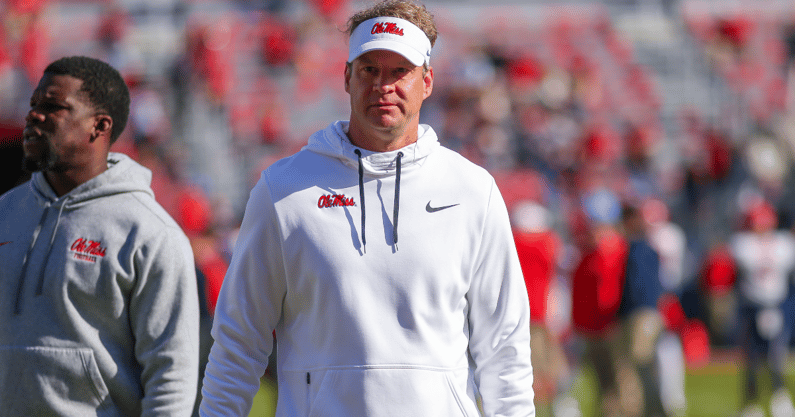Lane Kiffin says SEC is down to eight or nine-game format for future conference scheduling model

Ole Miss coach Lane Kiffin said Tuesday at the SEC coaches meeting in Destin, Florida, that the conference is down to two models for its future conference schedule, according to On3’s Jesse Simonton. The league will reportedly decided between an eight or nine-game conference schedule for when Oklahoma and Texas join in 2025.
The eight-game model would feature one common opponent each season with a rotating schedule of seven games. The nine-game model would feature three common opponents with six rotating games a year. Other models, including so-called “pods” and divisions, have already been ruled out.
There is apparently a divide between the upper echelon SEC schools and the teams in the bottom half of the conference, with revenue being among the main concerns. The perennial powers prefer the nine-game schedule because an extra conference game will likely mean higher TV ratings and more money. They also want to maintain annual rivalries by keeping three common opponents each season. The rest of the league, however, wants to keep four nonconference contests because it improves their chances of earning bowl eligibility.
The NCAA recently removed its divisional requirements for conferences with at least 12 schools. Before the change, teams were forced to divide themselves into two divisions and play each team in their division once a year. Teams in the same division could also not face each other in the conference title game. For example, Alabama could not face LSU in the SEC championship game, Michigan could not face Ohio State in the Big Ten championship game and Clemson could not face Miami in the ACC championship game.
Top 10
- 1New
Ranking SEC schedule
Toughest to easiest
- 2
Big Ten odds
Ranking contenders first to last
- 3Hot
Top 25 QB rankings
EA Sports CFB 26 rankings
- 4Trending
Jeremiah Smith
Vows to never lose to Michigan
- 5
5-star commitments
Multiple set for this week
Get the On3 Top 10 to your inbox every morning
By clicking "Subscribe to Newsletter", I agree to On3's Privacy Notice, Terms, and use of my personal information described therein.
Now those matchups and more could become possible if each conferences opts to take advantage of the loosened restrictions and create new structures. The Pac-12 became the first conference to rid of divisional requirements for its conference championship, and many more leagues are likely to follow.
The SEC is still deciding what to do with its scheduling model, but there is plenty of time to make a decision.